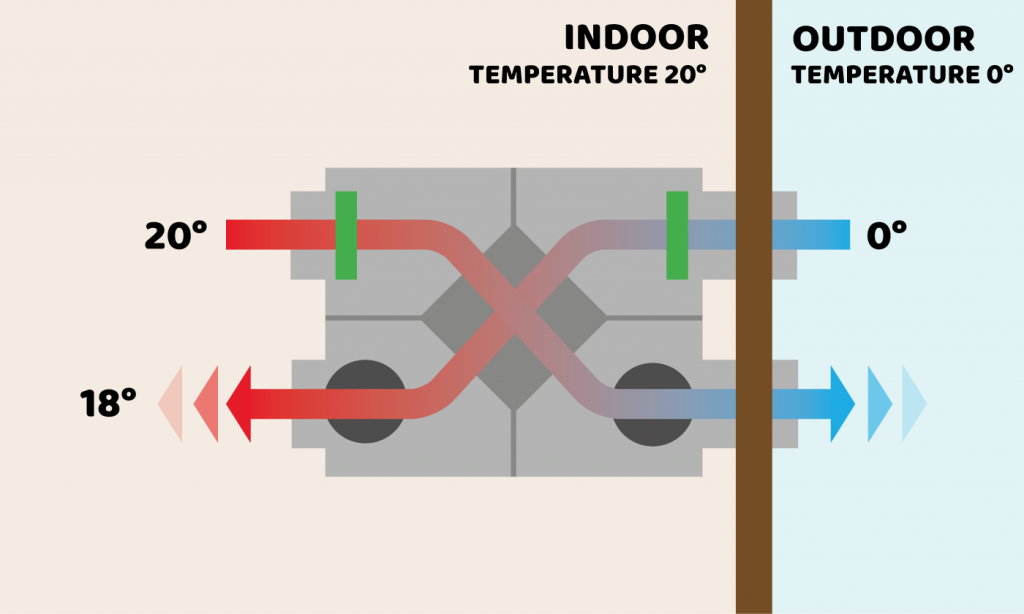Expert Tips to Maximize HRV Efficiency
The All-Inclusive Guide to the Uses of Heat Recovery Ventilation in Modern Structures
Heat Recovery Ventilation (HRV) systems represent a significant advancement in building technology (HRV Heat Recovery Ventilation). They offer a technique for exchanging stagnant indoor air with fresh outside air while reducing power loss. This method not just enhances interior air high quality but additionally contributes to power efficiency in both property and commercial structures. Understanding the different applications and advantages of HRV can disclose its vital duty in contemporary layout and sustainability efforts. The ramifications of this modern technology are worth checking out better
Understanding Heat Recovery Ventilation Systems

Several modern-day buildings prioritize energy efficiency, comprehending warmth recuperation air flow (HRV) systems is vital for optimizing indoor air high quality and minimizing power usage. HRV systems work by moving heat from stale indoor air to incoming fresh air, properly maintaining comfortable indoor temperature levels while minimizing power loss. These systems contain a warmth exchanger, fans, and ductwork that assist in the blood circulation of air. Throughout winter months, HRV units capture and recycle heat from the outbound air, while in summertime, they can help cool incoming air. By continually trading air, HRV systems additionally minimize moisture and the concentration of interior contaminants. Proper installment and upkeep of HRV systems are essential for their performance and performance in boosting overall structure efficiency and convenience.
Benefits of Heat Recovery Ventilation
Heat recovery ventilation systems offer countless advantages that boost both power performance and interior air top quality in modern structures. By recording and reusing power from exhaust air, these systems considerably reduce heating & cooling expenses, bring about reduced power usage. They preserve a stable flow of fresh exterior air, decreasing the danger of interior air toxins and irritants. This continuous exchange assists regulate humidity degrees, avoiding mold and mildew growth and ensuring a much healthier living environment. Additionally, HRV systems add to sustainability goals by lowering general carbon impacts. Their ability to maximize ventilation without compromising thermal comfort makes them a valuable enhancement to modern building style, advertising both economic and environmental advantages.
Applications of HRV in Residential Buildings
As home owners increasingly prioritize power efficiency and indoor air top quality, the applications of heat healing air flow (HRV) systems in residential structures have ended up being extra prevalent. HRV systems are especially beneficial in firmly secured homes, where keeping fresh air flow is vital for protecting against moisture buildup and indoor contaminants. They efficiently transfer warmth from outbound stale air to inbound fresh air, minimizing power prices connected with home heating and air conditioning. In addition, HRVs can improve comfort levels by regulating moisture and temperature. They are additionally versatile for various domestic styles, consisting of single-family homes and multi-unit buildings. Overall, incorporating HRV systems description supports lasting living practices while making certain a healthier interior environment for residents.
HRV in Industrial and Industrial Settings
In business and commercial setups, the application of warm healing ventilation (HRV) systems has actually come to be significantly critical for maximizing power efficiency and maintaining air top quality. These systems properly transfer heat from exhaust air to incoming fresh air, minimizing the requirement for additional home heating or air conditioning. This not only reduces energy costs however additionally adds to sustainability initiatives. Industries such as production, warehousing, and workplace structures benefit considerably from HRV systems, as they help regulate temperature level and moisture levels, making certain a comfy and efficient environment. Furthermore, HRV systems help in eliminating contaminants and excess dampness, improving interior air quality. As policies around air quality come to be more stringent, the fostering of HRV innovation is likely to expand, making it a vital element of modern industrial and industrial facilities.
Future Fads in Heat Recovery Ventilation Modern Technology

Frequently Asked Questions
Just How Does Heat Recovery Ventilation Impact Indoor Air High Quality?
Heat recovery ventilation substantially boosts interior air high quality by continuously trading stale interior air with fresh outside air while recovering power. This procedure reduces pollutants, maintains excellent moisture degrees, visit their website and assures a much healthier atmosphere for passengers.
Can HRV Solutions Be Installed in Existing Buildings?
HRV systems can without a doubt be installed in existing structures. Retrofitting might require alterations to ductwork and air flow formats, yet it significantly improves power performance and indoor air quality, making it a sensible choice for older structures.
What Upkeep Is Required for HRV Equipments?

Exist Certain Climates Where HRV Is Much More Effective?
Heat recovery ventilation systems are specifically effective in climates with substantial temperature level differences in between seasons. These systems maximize energy efficiency by recouping warm from exhaust air, making them ideal for both cool and reasonably warm settings.
Just How Do HRV Solutions Affect Energy Expenses?
